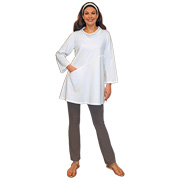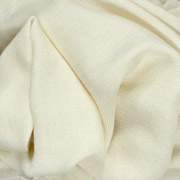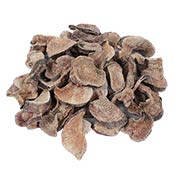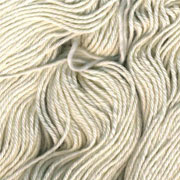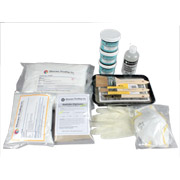
Natural dyes have been around for thousands of years. It wasn't until 1856 when the first synthetic dye, Mauveine, was discovered and put into production by William Henry Perkin. Before that there were no alternatives to extracting color from plants, fungus, a few insects and some special species of mollusks. But these traditional dye sources provide color with subtle variation and texture that is hard to replicate with synthetic dye, and the preparation of your own dyestuffs is as much a part of the art of dyeing as is the final product. In this tutorial we will share a basic natural dye recipe using madder and cochineal, but this technique works for most natural dyes on wool and silk.
Shopping list:
- Natural Dyes (#ND) Madder and Cochineal
- Alum (Aluminum Sulfate) mordant
- Yarn or fabric- we used Gaia Organic Worsted and Soie Naturelle
- Kieralon or Dharma Professional Textile Detergent
- A big non-reactive pot, enamel or stainless steel, 1+ gal for every 8 oz. of fiber
- Coffee filter or scrap fabric to filter dyestuffs and make "tea bag"
- Kitchen twine
- Blender
Let's get started!

The Method:
1. Prewash your yarn with Kieralon and rinse well. We split each skein so each pot had 8 oz. of yarn total, 4 oz. of each wool and silk.
2. To mordant the yarn, simmer together with 1.75 tsp of alum per lb. of fiber and, optionally, 1 teaspoon cream of tartar for 1 hour. Allow the fiber to cool in the solution and then squeeze out excess water from material.

Pro tip: You can allow the yarn/fabric to dry if you want to stockpile some pre-mordanted material, but you want to use it in about a month as over time the alum can degrade the fiber.
3. Measure and simmer your dyestuff for an hour using enough water so your fabric can move freely once you add it. You may need to chop up larger roots, such as when you use raw madder. This is best done the day before you dye. You can mordant your yarn at the same time so it is all ready to go the next day.


Pro-tip(s): Most natural dyestuffs like to be soaked overnight for some of the darkest shades. We prepped our dyestuffs in a blender with water and let them soak overnight. We used 50% weight of goods for the ground madder and 20% weight of goods for the cochineal. We also strained the dyestuffs and made "tea bags" with some scrap muslin so there wouldn't be loose floating plant matter when we added our yarns. Check out these great videos from Kimberly Baxter Packwood for more tips and tricks to get the most color out of your dyestuffs:
Prepping madder root
Making a cochineal extract

4. If you didn't make a tea bag, strain out any roots, shavings, etc. and pour your extract liquid into your pot. Coffee filters or some scrap fabric work great for this. You can re-soak the dyestuff you strained out to make a paler dye bath too, so don't toss it. If you made a tea bag just take it out and set it aside.

5. Add your wet yarns and simmer for another hour, then allow to cool in the dye bath for maximum color absorption. Be sure to stir periodically for even dyeing, turning the yarn/fabric frequently while simmering. You can save and re-use the dyebath for lighter shades.


Pro-tip: Keep the madder below 200 degrees, around 180 is best. Any hotter and the red dye compounds will break down and your color will shift towards yellow and orange.


6. Give the yarn/fabric a final gentle wash with Kieralon and rinse until the water is clear.
Dharma uses this simple recipe to get these great colors with our natural dyes so you can have a reference for the colors they will give.


Keep in mind there are many recipes and mordants that will yield a wide range of colors and shades from each dye material, so consult a natural dye book for more on this. A great resource that we carry Wild Color: Revised and Updated Edition.
Indigo is in a class by itself, so a different recipe is used, also available on our website.
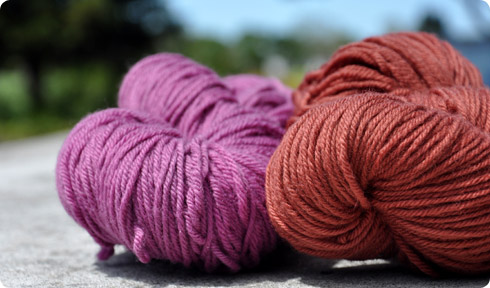
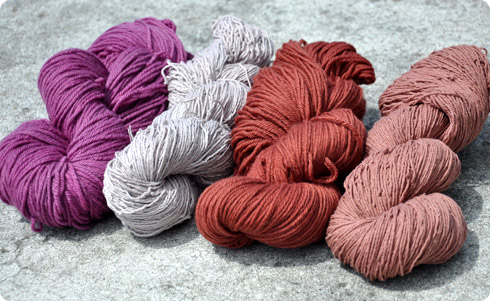
For the deepest colors, use a ratio of 1 to 1 by weight, dyestuff to fabric, or 2 oz. dye to 2 oz. fabric, but you can still get good colors using much less dye. We used about 3-4 tablespoons per yard of fabric. Cochineal is an exception as it is very concentrated, so use only a 20% ratio of dye to fabric. Experimentation is the best way to determine the right amount of dye for the type of fabric you are using and the color. We found the silk and velvet absorbed colors the deepest. Some cottons will yield different and deeper shades using Tara Powder (a form of tannic acid) as a mordant with soda ash as an assist. Don't forget that the dyebaths can be re-used to get lighter shades.
Yellows can be overdyed with indigo to get shades of green, and reds overdyed with indigo will give purples.
Something fun to try:
Madder will shift color as you change the pH of the water. Try dyeing up some samples in mason jars and vary the pH of the water with a little citric acid or soda ash. A lower acid pH (citric acid) will shift the color more orange, and higher more alkali pH (soda ash) will shift the color to bluer/darker hues.




